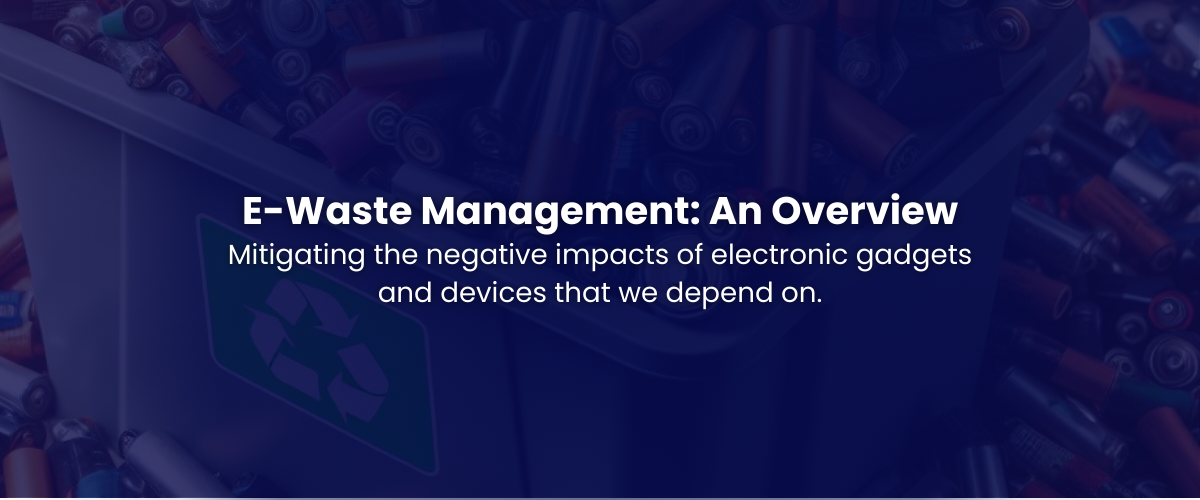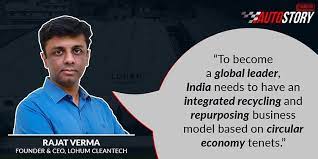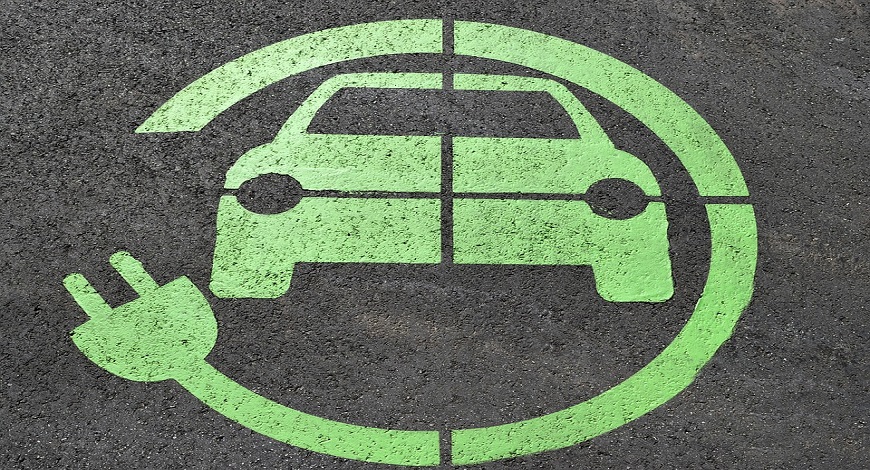
The environmental impact of electronic gadgets is a multifaceted issue that encompasses the entire lifecycle of these devices, from production to disposal or recycling. The environmental impact of electronic gadgets is a pressing global issue that requires concerted efforts from all stakeholders.
Battery waste is a significant and growing part of the e-waste management challenge, and its proper management is essential for environmental protection and resource conservation. This edition of the LOHUM Green Gazette overviews the environmental impact of electronic gadgets, how it relates to responsible consumption, E-waste management, and battery waste management, and the broader implications of electronic gadget consumption.
The production phase involves the extraction and refining of raw materials, which often includes mining for metals that are both rare and have significant environmental footprints. The manufacturing process also consumes energy and resources, contributing to carbon emissions and other forms of pollution.
Once in the hands of consumers, electronic gadgets, typically production-scale ‘consumer electronics’ contribute to energy consumption during their active life cycle. However, it is the end-of-life stage when the electronics are discarded that poses significant environmental challenges and an economic deadweight loss of materials.
This is electronic waste or e-waste, and it is one of the fastest-growing waste streams globally. E-waste encompasses a wide variety of products, including computers, screens, mobile phones, portable medical devices, lights, toys, telecom equipment, household appliances, and more.
The relationship between battery waste and e-waste is intrinsic, as batteries are a common component of electronic gadgets. Battery waste is a concerning subset of e-waste management, particularly due to the hazardous materials it contains, such as lead, cadmium, lithium, cobalt, and other volatile and toxic materials that can leach into the environment through e-waste containing landfills or harm workers in informal e-waste management operations.
The categorization of battery waste management separately from e-waste management has evolved as the understanding of the distinct environmental and health impacts of batteries grows. The specific categorization and regulation of battery waste have become more pronounced in recent years.
The percentage of e-waste that is battery waste varies by region and over time, but it is a significant portion of the total e-waste stream. As technology advances and the use of batteries becomes more prevalent, the proportion of battery waste is rising. This underscores the importance of developing and implementing effective battery waste management strategies.
For instance, the very first battery waste regulations worldwide were notified in the early 2000s, aiming to collect used lead-acid batteries for environmentally viable recycling, or simply storing batteries until recycling technology became viable enough.
With the arrival of the EU Battery Regulations, India’s Battery Waste Management Rules (BWMR 2022), and more legislation worldwide, not only has battery waste been separated from e-waste management in regulatory structures, but battery waste has also been broadly categorized by typology of batteries. These rules have been updated and replaced over time to cover a broader range of battery types and to ensure more comprehensive management of battery waste.
Responsible consumption and e-waste management are critical in mitigating the environmental impact of electronic gadgets.
The conventional Reduce, Reuse, Recycle mantra translates to e-waste as:
Reducing consumption: through sustainable, long-lasting, high-quality products that are modular, upgradable, and free from planned obsolescence.
Extending the life of devices: through repair, reuse, refurbishing, and repurposing or upcycling. Extended Producer Responsibility legislations are also factoring in refurbishment and repurposing into circular economy frameworks.
Implementing circularity: by ensuring formalized & traceable e-waste recycling, as well as incorporating design-for-recycling in manufacturing.
E-waste recycling not only prevents hazardous materials from entering the environment but also recovers valuable materials that can be reused, reducing the need for new raw materials.
The increasing demand for consumer electronics contributes to a cycle of production and waste that has global environmental, social, and economic impacts. Responsible disposal practices, such as recycling and formalized & regulated waste management as part of extended producer responsibility, are essential to minimize these impacts.
Recycling combined with responsible disposal prevents environmental pollution, reduces the strain on natural resources, and protects human health, particularly for those in low- and middle-income regions where much of the e-waste ends up.
The broader implications of electronic gadget consumption include the need for responsible disposal practices. Consumers, manufacturers, and policymakers all have roles to play in ensuring that e-waste management is environmentally and economically viable. Consumers can contribute by properly disposing of their electronic gadgets at designated recycling centers or through take-back programs offered by manufacturers.
Recycling plays a crucial role in e-waste management by reducing the environmental impact of discarded electronics. It allows for the recovery of valuable materials, conserves natural resources, and minimizes the need for new raw material extraction.
The e-waste recycling process typically involves manual collection and processing, followed by mechanical processing to recover useful materials. Globally, the percentage of e-waste that is recycled is less than one-fifth. As of 2019, only 17.4% of e-waste was documented as formally collected and recycled, according to the WHO. This figure has been rising in some regions.
For instance, in India, the recycling rate increased to 32.9% in 2021-22. However, the global trend shows that e-waste is rising faster than the rate of documented recycling, with projections suggesting that the recycling rate may drop to 20% by 2030 due to the widening gap between e-waste generation and e-waste management & recycling efforts.
The purity and yields claimed by e-waste recyclers can vary widely based on the technology and processes used. High metal purity in recycling requires complex steps such as multi-stage solvent extraction and ion exchange. Precious metals recovered through e-waste management significantly contribute to recycling revenues, and increasingly sustainable technologies are being developed for recycling and upcycling these metals from e-waste. It’s estimated that approximately 60% of e-waste is metals such as iron, copper, aluminum, and gold, all of which are highly recyclable.
By embracing responsible manufacturing, consumption, and e-waste recycling, we can mitigate the negative impacts of electronic gadgets and devices that we depend on and move towards a more sustainable future and a well-rounded energy transition.
Related blogs
This entrepreneur wants India to make its own lithium-ion cells for electric vehicle batteries

Forbes India
Rajat Verma already recovers raw materials from used cells at his venture, LOHUM Cleantech. He wants to close the loop by making cells in India as well.
India needs integrated recycling and repurposing battery business model: Rajat Verma of LOHUM Cleantech

YOURSTORY
In an interaction with AutoStory, Rajat Verma, Founder and CEO of LOHUM Cleantech, speaks about building his company, and about battery manufacturing and repurposing as an industry.
Sourcing Raw Materials Is A Big Challenge In Li-ion Battery Space: Founder Lohum

Business World Disrupt
Recognized as ‘The Most Innovative Company of the year 2022’ by The Confederation of Indian Industry (CII), LOHUM is a producer of sustainable Li-ion battery raw materials
1800 572 8822
Email : enquiry@lohum.com
G98, Site, 5, Kasna, Block A, Surajpur Site V, Greater Noida, Uttar Pradesh 201306
LOHUM Cleantech Private Limited, Plot No. D-7 & 8, Site 5th, Kasna Industrial Area, Greater Noida, Gautam Budh Nagar, Uttar Pradesh – 201308
LOHUM Cleantech Private Limited, Plot No. O-17, Site 5th, Kasna Industrial Area, Greater Noida, Gautam Budh Nagar, Uttar Pradesh – 201308